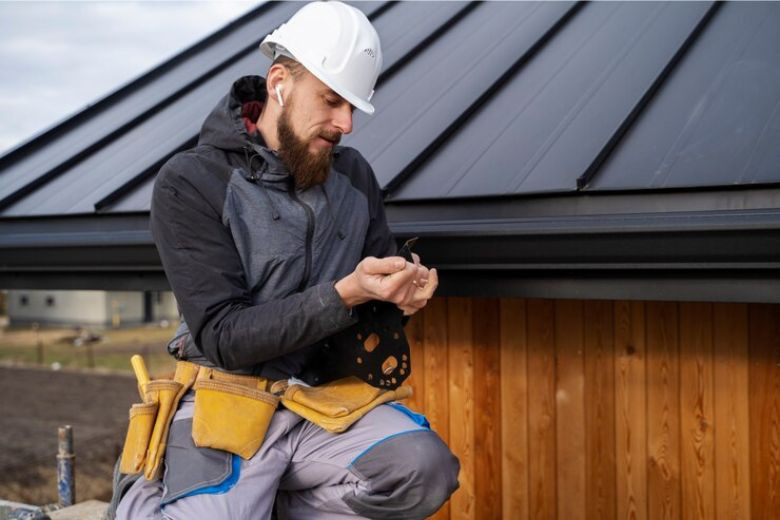The History and Evolution of Roofing Styles
Posted on September 07, 2024 by Admin

The history of roofing styles peers through the architectural evolutionary process, changing materials, technologies, and aesthetic tastes from ancient thatched roofs to modern metal and green roofs. Much of the evolution has been pegged on practical needs that find innovative remedies. This blog explores the history and evolution of roofing styles and highlights key milestones and trends that have shaped roofs over our heads.
Ancient Roofing Materials
These earliest roofing designs were determined by the local resource availability and climatic conditions. For example, mud bricks or reeds were commonly used for roofs in Mesopotamia, Egypt, and other ancient civilizations. Such primitive roofs were flatly designed, aimed at protecting people from the hot sun. Thatched roofs were typical in those countries with lush wood supplies. Using straw or palm leaves that supplied insulation against the elements was common.
Medieval Roofing Styles
During the Middle Ages, roofing styles were developing to become more durable materials. Steeply pitched roofs prevailed in Europe, customarily covered with wooden shingles or slate. This type of design was invented so that the rain and snow could runoff, taking into consideration that the climate could be cold in Northern Europe. Another important development at that time included lead and copper roofing that would provide long-lasting protection for essential buildings like churches and castles.
Influence of Renaissance and Baroque
With the Renaissance period, renewed interests in aesthetics and grandeur definitely had to affect roofing styles. It was characteristic of the Mediterranean region and featured elaborate tilework among other decorative features. One defining feature of Renaissance architecture is the use of terracotta tiles, which boasts a reddish hue. Curvilinear detailing and sculptural elements are ornamentations that manifest on rooflines with the Baroque style on the other hand.
Industrial Revolution Innovations
The Industrial Revolution played an important role in the development of several roofing styles. New materials, such as corrugated metal and asphalt shingles, managed to revolutionize roofing methods. According to the record, metal roofs were the most expensive at that particular time but became affordable when mass production techniques were invented. Asphalt shingles were more reasonably priced and versatile; soon, they were preferred by so many due to the fact that they are easy to install and very strong.
Modern Roofing Trends
With the advent of newer technologies and tastes, a wide array of roofing styles were then developed in the 20th century. Some modern roofing materials are the following: Asphalt Shingles: Due to their low cost and wide range of various styles, they remain very popular. Metal Roofs: They are very durable and energy-efficient, and they exude so much style.
Flat Roofs: Found mostly in the urban scene, very prevalent in commercial building construction, they are constructed out of EPDM rubber or, more recently, TPO.Also in the second half of the century there has been increased environmentally friendly roofing solutions, a pointer to increased sustainability awareness.
Modern Roofing and Green Roofing
Today, it continues to develop under the demands of addressing the present and future needs of both humans and the environment. The green roofs that can accommodate vegetation and provide insulation capable of keeping interior temperatures naturally comfortable have interested many. These roofs reduce the urban heat island effect and work to manage stormwater runoff. In fact, today, solar panels could be installed on top of roofing systems, and such can allow homes the production of self-generated electricity independently.
Conclusion
History has it that roofing styles have undergone many changes from ancient thatched roofs to modern green and solar roofs, with each age adding on to the progress in technologies and aesthetics of roofing. Knowing how roofing styles have evolved over history will not only give insight into architectural trends but also into aiding a well-balanced decision by a homeowner or builder on the style and type of roofing material to be used. It will then show us how the changing needs and environmental priorities progress to change the roofs sheltering us in the future as we move into it.
Also Read :
DIY Roof Repair: When to Try It Yourself and When to Call a Professional
The Benefits of Greywater Recycling Systems
How to Handle Plumbing Issues During a Home Renovation
How to Plan a Whole-House Plumbing Repipe
Faqs
-
1. What were the primary materials used in ancient civilizations as roofing?
Ancient civilizations mainly used mud bricks, reeds, and thatch for roofing. These materials were readymade, best-suited to environmental conditions, hence offered the best protection from climatic elements then.
-
2. How did the styles of roofing change in this medieval period?
In the medieval period, Europe further saw a radical change in roofing styles to steeply pitched, having an introduction of cover materials such as wooden shingles or slate. Designs improved rain and snow shedding capabilities and featured more durable materials like lead and copper for important buildings.
-
3. What were the key roofing innovations introduced during the Industrial Revolution?
The Industrial Revolution brought about corrugated metal and asphalt shingles. These inventions democratized roofing, making the process less expensive and more durable, as metal roofs became affordable and asphalt shingles very feasible and inexpensive.
-
4. What are some modern roofing materials and trends?
Modern roofing material includes asphalt shingles, metal roofs, and flat roofing systems manufactured from either EPDM rubber or TPO. Trends in the modern age have also included green roofs supporting vegetation and integrated solar panels for energy efficiency.
-
5. How have environmental concerns influenced recent roofing styles?
Environmental concerns have had an impact on recent roofing styles, especially the use of green roofs and solar panels. Green roofing controls stormwater and lessens urban heat, while solar panels contribute to the generation and sustainability of energy.
Recent Post
- Top Plumbing Service Providers in Arizona, USA
- Top 10 Electrician Service Providers in Alabama, USA
- Top 20 Roof Repair Service Providers in Alabama, USA
- The Role of Roof Insulation in Energy Efficiency: Tips and Tricks
- Understanding Roof Damage from Wildlife and How to Prevent It
- How to Choose the Best Roofing Contractor for Emergency Repairs
- Roofing Maintenance for Historic Homes: Preserving Architectural Integrity
- The Importance of Proper Attic Ventilation for Roof Health
- How to Identify and Prevent Roof Mold and Mildew
- The Best Practices for Removing Snow from Your Roof